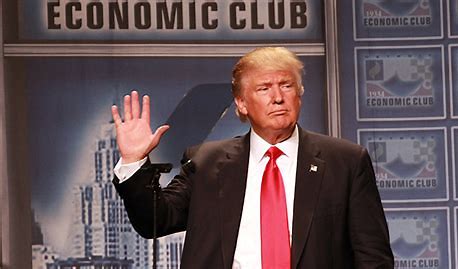
After the epidemic, the global economy as a whole declined, but the US GDP recovery momentum is strong. Us GDP grew by 2.7% year on year in the third quarter of 2024, albeit slightly slower than in the previous quarter. However, compared with other major economies, the advantages are still clear. The resilience of the US economy is mainly due to the strong consumer market, a healthy job market and the continuous promotion of scientific and technological innovation. In addition, the United States leads in high-tech fields such as AI and semiconductors. It attracted a lot of investment, further boosting economic growth.
The Federal Reserve recently cut interest rates in response to easing inflationary pressures and slowing economic growth. Some investors expect the Fed to stop cutting rates in 2025. And even reconsider the possibility of raising interest rates. Fed Chairman Jerome Powell said at a press conference in November. The pace of future rate cuts will depend on changes in economic data, particularly the performance of inflation and the job market. He stressed that the Fed could cut interest rates further if inflation continues to run below its 2% target; But if the economy remains strong and inflation does not move toward 2% on a sustained basis, the Fed can ease policy constraints more slowly. This policy flexibility and uncertainty has provided support for the rise of the dollar index.
The global geopolitical situation remains tense in 2024, and factors such as the ongoing Russia-Ukraine conflict, the escalation of the Palestinian-Israeli conflict, and instability in the Middle East have intensified the risk aversion of the market. The dollar, as the gold standard currency, is naturally favored. For example, the continuation of the Israeli-Palestinian conflict leads to potential risks to energy supplies in the Middle East, and oil prices will be affected. Investors around the world converted their assets into dollars, pushing up the dollar index. In addition, the stability of the domestic political situation in the United States has also strengthened the safe-haven nature of the dollar. Although Trump was re-elected president of the United States. But the continuity of its policies and the stability of the US political system have given the market relatively strong confidence in the US economy and the dollar.
In the course of the dollar index's rise, the weakness of its rival euro also contributed to the reason. Growth in the eurozone was weak and well below market expectations. The European Central Bank also entered a rate cut cycle in 2024 in response to slowing economic growth and declining inflationary pressures. The euro fell sharply against the dollar, which also pushed the dollar index higher. The UK economy is also facing challenges, with the UK economy growing at zero quarter-on-quarter in the third quarter of 2024, inflation rising to 2.6%, and the Bank of England announcing a 25 basis point interest rate cut. To stimulate economic growth. In terms of the yen, although the Bank of Japan maintained a relatively stable monetary policy in 2024, the yen also depreciated against the US dollar due to the fragility of Japan's economic growth and subdued inflation. The weakness of these currencies has further increased the value of the dollar in the international monetary system.
A higher dollar index will have a negative impact on the rest of the United States, and Trump has expressed a preference for a "weak dollar" more than once during the campaign.
Us financial markets have been significantly affected by the rising dollar. First, a rising dollar usually causes volatility in U.S. stock markets. When the dollar rises, investors are likely to shift money out of stocks and into dollar assets. That caused the stock market to fall. In 2024, the US stock market has seen several relatively large shocks. This is partly due to the impact of the higher dollar. Second, a rising dollar would spill over into the US bond market. A stronger dollar usually pushes Treasury yields higher. Investors expect the Fed to tighten policy in response to inflationary pressures from a rising dollar.
Former U.S. Treasury Secretary John Connally famously said, "Our currency, your problem." Taken together, the dollar may still be a big "trouble" in 2025. Countries can only deal with exchange rate risk by continuing to increase their reserves of dollar assets and devaluing their currencies to increase exports.

The global electric vehicle market in 2025 is experiencing intense turbulence. Tesla, once a disruptor that reshaped the industry landscape, is now mired in an unprecedented sales crisis.
The global electric vehicle market in 2025 is experiencing …
Recently, Chinese telecom companies Huawei and ZTE signed a…
Recently, according to Xinhua News Agency, Israel's air str…
A strongly worded report from the Equality Trust argues tha…
On November 27, 2025, Alibaba officially entered the global…
The focus of the global financial market in 2025 has always…